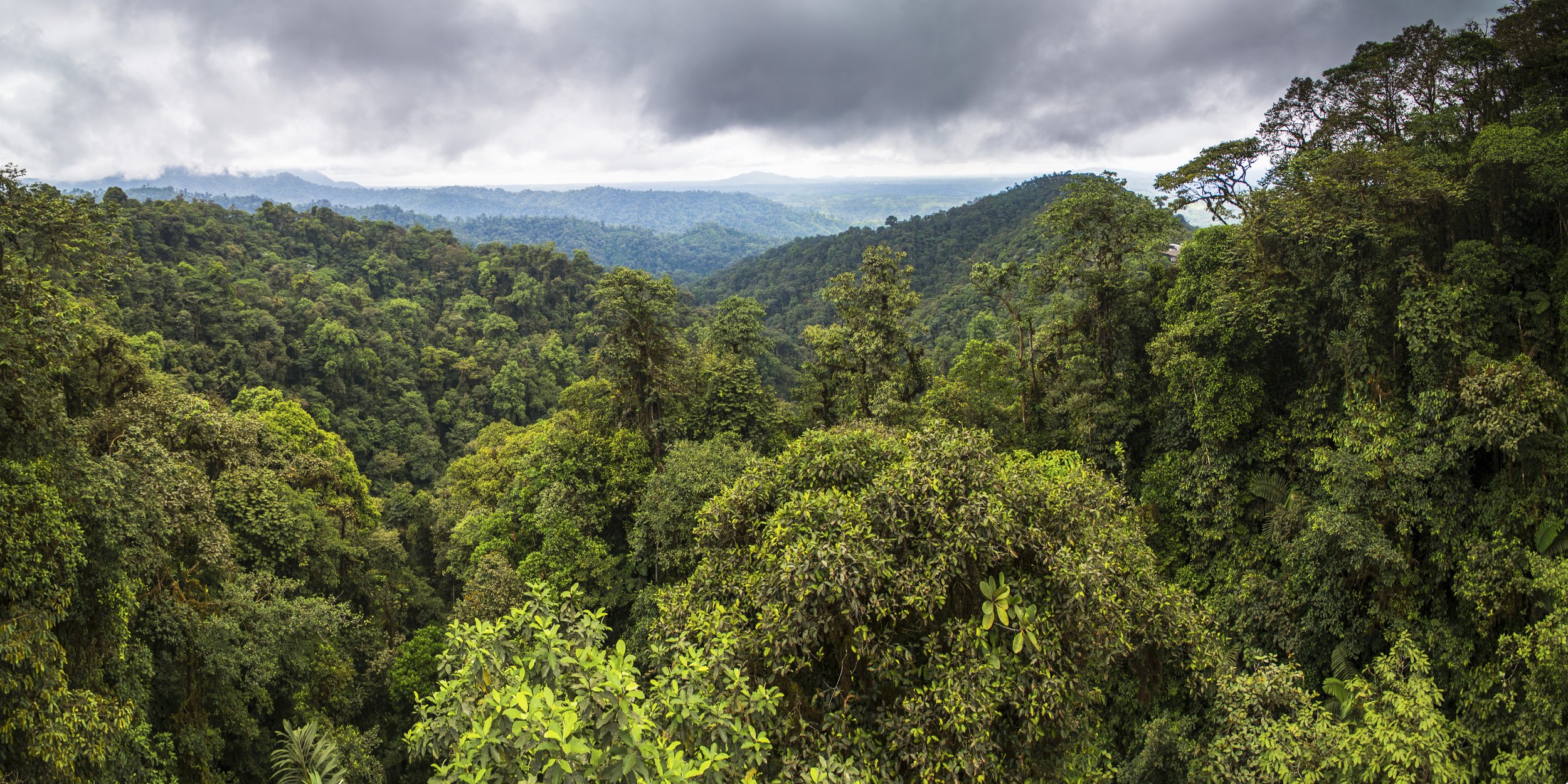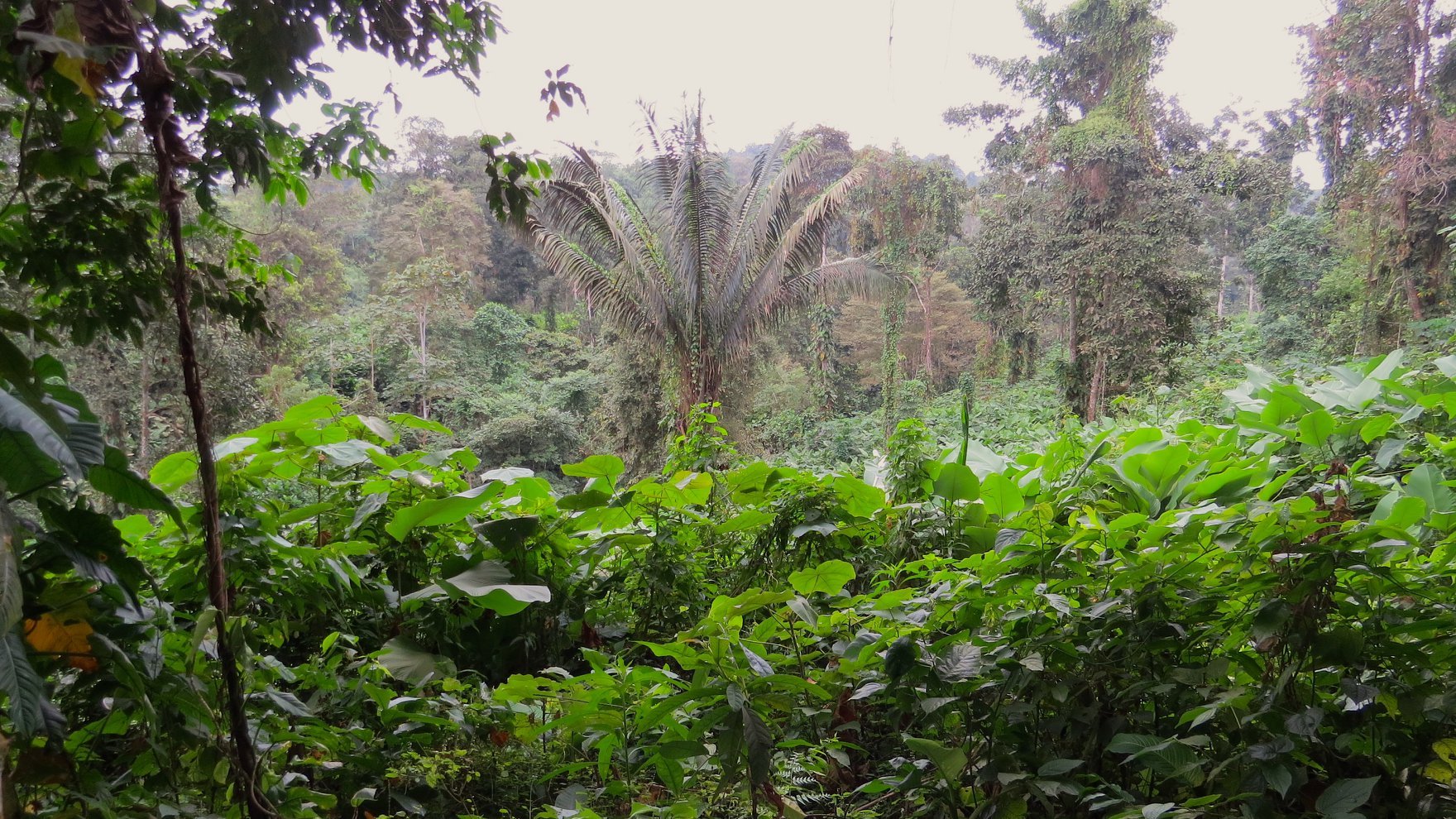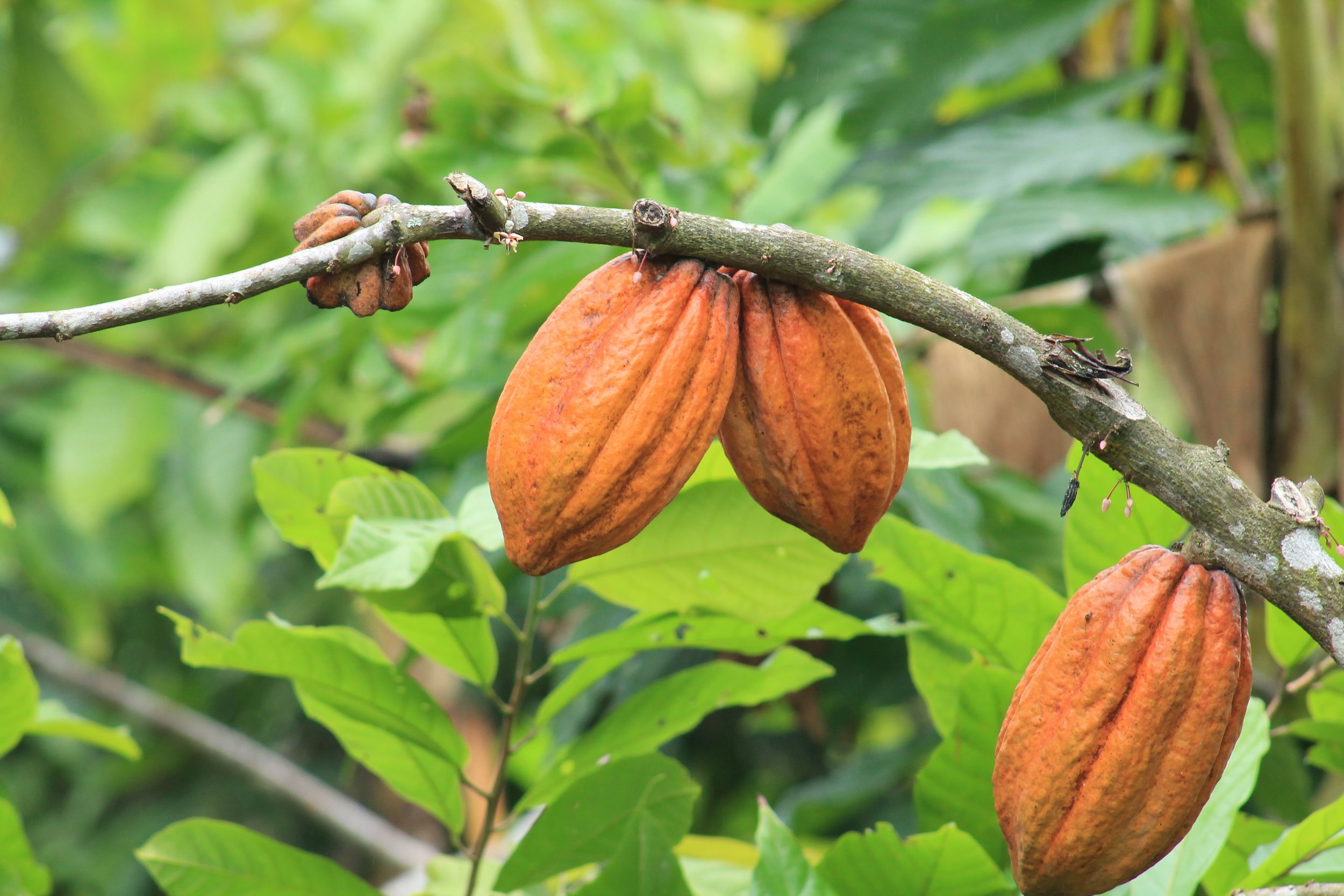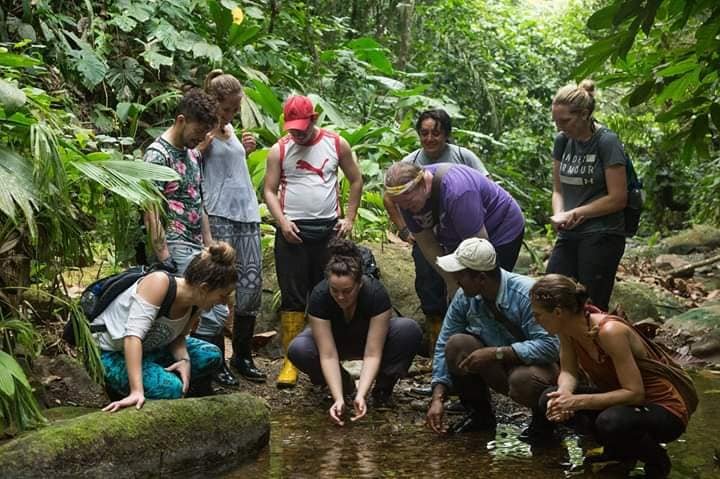
What We Do

Focus Area.
Our focus region is the Chachi territories within and around the Mache-Chindul Ecological Reserve and the buffer zone between the reserve and Pacific ocean. The bulk of the area resides within the municipality of Muisne.
The focus landscape encompasses various land-uses intermingled with forest patches. In large properties, the dominant land-use tends to be for the grazing of livestock and oil palm plantations. Small properties harbor considerable diversity of mostly perennial crops, among which cacao "criollo" and "nacional" are prevalent.
Cacao is intermingles with fruit trees such as plantain, bananas, mangoes, various ingá species, oranges, mandarin, lemon, papaya and less common fruits such as zapote and borojó, the last one an endemic medicinal fruit. These are complemented by a few head of cattle or pigs, chickens and ducks and annual crops such as maize, rice, yuca, melons, pumpkins, peppers and passion fruit among others. Along the coast, families combine fishing and collecting in mangroves with agricultural activities. Given the heavy human presence in the area, conservation and livelihoods must go hand-in-hand.

The Chocó is one of the most biodiverse ecosystems on earth.
The Chocó is a biodiversity hot spot with the highest level of endemism of any ecosystem in the country. This natural wonder is under intense pressure from livestock, oil palm, shrimp aquaculture, the production of balsa wood, hunting, and the increasing use of herbicides and pesticides. We believe that conservation and dignified livelihoods can co-exist. We are certain that in this marvelously diverse and productive eco system it can be done.
Why is it under threat?
-
In the coastal areas of northwestern Ecuador, where the Chocó forest meets the Pacific, human pressure has been felt for millenia. The area is riddled with archaeological sites - many of them ransacked - purportedly from the Jama-Coaque or/and La Tolita cultures of 1500 to 500 years ago. More recently, in the post-Columbus era the region has been home to a number of different ethnic groups - Chachis, Afro-Ecuadorians and settlers from a number of places and ethnicities. Until the 1970s, the limited road and market access maintained human pressure in balance with the rest of nature, but things have changed.
-
The development of roads, a regional port, and refinery built in the late 1970s in Esmeraldas brought with them, logging companies, people who hunt and fish, and cattle. In the early 90's the shrimp industry devastated mangroves and more recently oil palm plantations are destroying and poisoning coastal and riverine wetlands. These trends have produced de-facto poverty and its sidekick; delinquency both in coastal villages and metropolitan areas. This destruction is taking place before the sciences - both social and natural - have had an opportunity to even assess what it is that we are destroying. No doubt that we are losing invaluable resources; natural, cultural and economic. But we at Fundación Aullador see many opportunities to reverse this situation in at least some critical areas.







